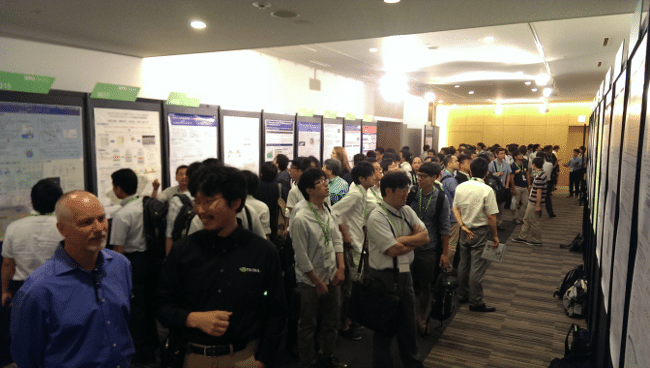
Developers. Partners. Enthusiasts. GPUs are used by everyone from gamers to researchers doing cutting-edge science. And they’re all over our latest GPU Technology Conference in Tokyo this week.
Co-hosted by the GPU Computing Study Group at the Tokyo Institute of Technology, the event brings together more than 1,500 people in Tokyo to discuss the ways all these communities intersect.

NVIDIA Fellow David Kirk kicked off the conference with a keynote speech outlining the broad reach of GPUs and CUDA – the parallel programming platform that has been built around GPUs.
CUDA, Kirk explained, was inspired by three things: graphics were becoming more computational; realistic graphics required simulations of physics; and visual computing is a much larger field than computer graphics alone.
Kirk cited several examples of how CUDA is being used for cutting-edge research in Japan. Tokyo Tech is using GPUs to accelerate genomics identifying frequent k-mers in DNA sequences. At Waseda University, researchers are simulating the adaptive behavior selection of humanoid robots using deep neural networks on GPUs. And at Hokkaido University, real-time deformation and fracture of soft biological tissues are being simulated to provide more realism for surgical training.
“CUDA is everywhere in Japan, which is why GTC is growing and expanding every year and is nothing short of astounding,” Kirk said. “CUDA is used in various areas in our lives, such as powering drones to spot and avoid collisions on their own, enabling medical devices to pinpoint lesions with better clarity to detect breast cancer earlier, and allowing researchers to run complex atomic simulations to help identify new ways to combat HIV.”

Exciting stuff. Attendees filled more than 50 breakout sessions to capacity, and listened as speakers presented their papers and browsed dozens of research posters. The agenda featured technical talks from university professors, engineers and industry executives.
Guanghao Jin, from Tokyo Institute of Technology, won the NVIDIA Award – awarded for the best paper of the conference – for his work on “Data Management and Loop Controlling to Surpass Memory Capacity of GPU in OpenACC Framework.”